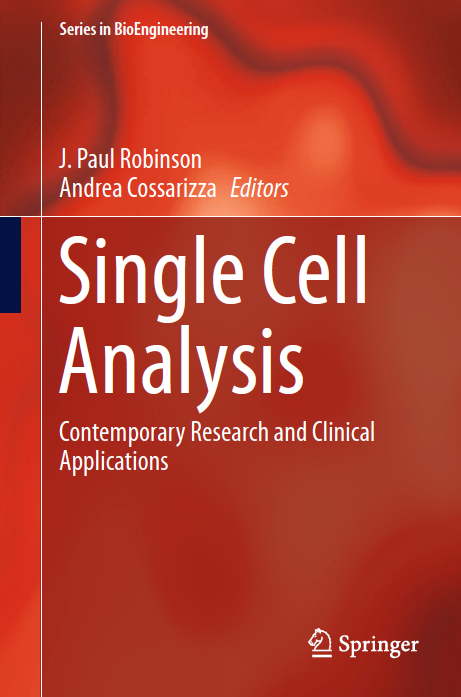Robinson Lab Current Projects
J. Paul Robinson Lab
Google Scholar Link to see our publications
LASER INDUCED BREAKDOWN SPECTROSCOPY: We have combined Laser Induced Breakdown Spectroscopy (LIBS) with lanthanide-antibody tags to create a unique way to detect pathogens or toxins. We currently designed and built a custom LIBS instrument and we plan to move this to a field deployable hand-held instrument for biological detection. The opportunities extend from bioterrorism, to food pathogens and chemical contaminants. This exciting technology has the opportunity for an innovative approach that incorporates detection, diagnostics and quantification. (Funded by USDA)
ELASTIC LIGHT SCATTER: We developed a technology for identification of bacterial pathogens using elastic light scatter (ELS). It uses a laser to interrogate a bacterial colony and the scatter forms a unique pattern onto an imaging sensor. We have developed a number of projects from this technology including new approaches to classification, instrumentation and automation. (Funded by USDA)
Here is a link that explanins ELS.... and lots more on this page
SINGLE PHOTON SPECTROSCOPY: We are very excited about the opportunities in expanding our current PMT/APD photon measurement technologies to single photon (SP) detection. Of particular interest is the unique expansion of spectral analysis in flow cytometry using single photon detectors. Here is a link to a recent paper on single photon detector design by our collaborator Masaonobu Yamamoto. We have developed our own unique high-speed, low-noise detector and we are moving toward building a 42 ch array detector which we believe will be transformational in biological imaging and the first such detector ever created. The opportunities for integration into multiple detection technologies are endless! Single photon detectors will one day replace many current photon detectors. (Funded by NSF)
Here is a link to a recent book we published on this topic
NANO-PARTICLE DETECTION: It seems everyone wants to study nano-particles (NP) but few if any technologies can actually achieve measurement of single NPs and let alone characterize them. We have designed a Blu-Ray based technology as a Point Of Care (POC) technology that can analyze particles as small as 20nm. We want to advance this technology by integrating multiple fluorescent detection options, and in the future determine how to sort or separate these particles. There are many applications for this technology – detection of cancer-markers in plasma, monitoring cancer after therapy, monitoring HIV or HBV or potentially any perhaps any viral disease or even plastic particles in the environment.
Here is a Youtube link about this project
SPECTRAL SORTING PROJECT: We recently (Nov, 2020) installed Propel's latest sorter - the Bigfoot. This sorter has 60 detectors and 9 lasers, and is the most sophisticated sorter on the market. It has some special attributes related to spectral sorting. We have recently been testing the sorter by sorting single E. coli or S. aureus organisms directly onto petri dishes. We can sort a single organism into any specific location on the dish. One goal is to expand our database of known organisms using eleastic light scatter technology (see above).
Some of our Software Projects
1. High Throughput Flow Cytometry Analysis
